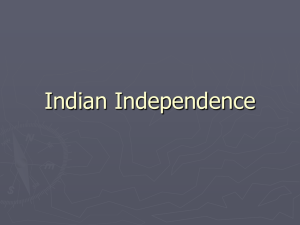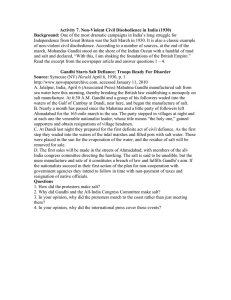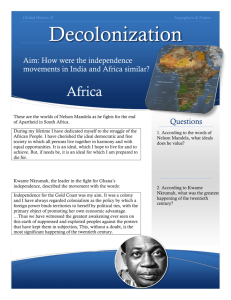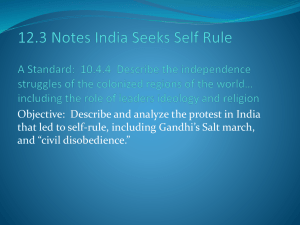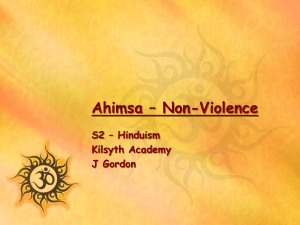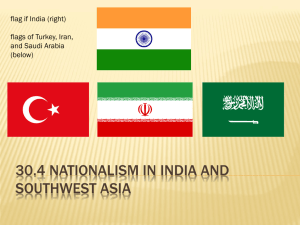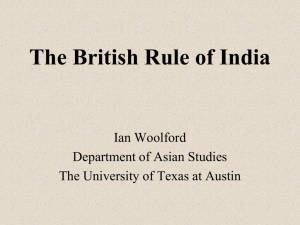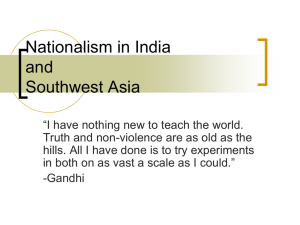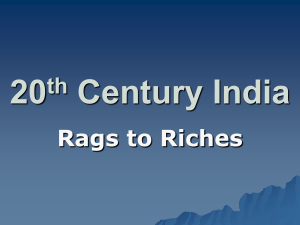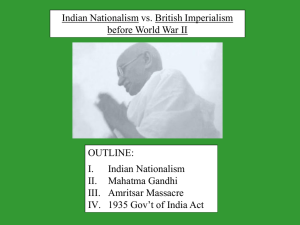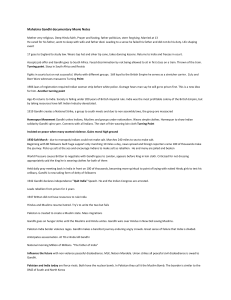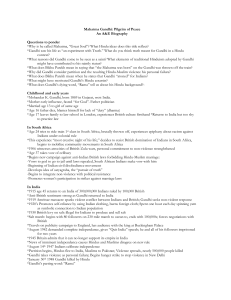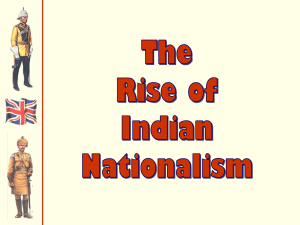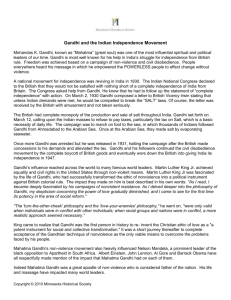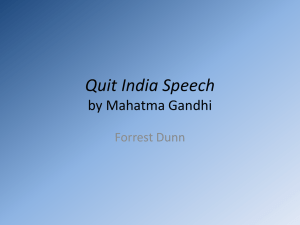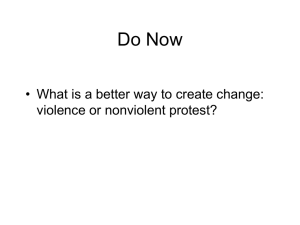India Independence * Mohandas Gandhi- Day 3
advertisement
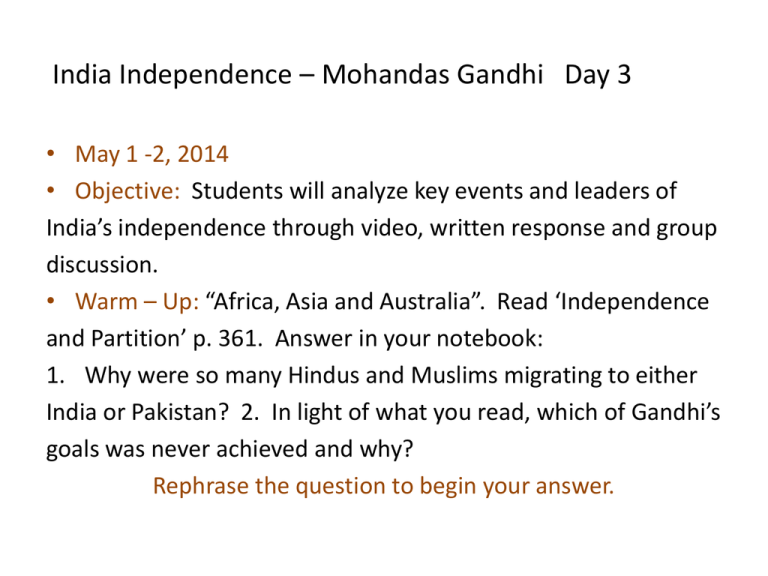
India Independence – Mohandas Gandhi Day 3 • May 1 -2, 2014 • Objective: Students will analyze key events and leaders of India’s independence through video, written response and group discussion. • Warm – Up: “Africa, Asia and Australia”. Read ‘Independence and Partition’ p. 361. Answer in your notebook: 1. Why were so many Hindus and Muslims migrating to either India or Pakistan? 2. In light of what you read, which of Gandhi’s goals was never achieved and why? Rephrase the question to begin your answer. March to the Sea • In 1930, Gandhi led a defiant ‘March to the Sea’ in protest of the British monopoly on salt, his boldest act of civil disobedience yet against British rule in India. • Britain's Salt Acts prohibited Indians from collecting or selling salt, a staple in the Indian diet. Citizens were forced to buy salt from the British, who, in addition to exercising a monopoly over the manufacture and sale of salt, also exerted a heavy salt tax. Although India's poor suffered most under the tax, Indians required salt. Defying the Salt Acts, Gandhi reasoned, would be a simple way for many Indians to break a British law nonviolently. Seminar Questions 1. What is “homespun” and why is it important to India’s independence movement? 2. What was the purpose behind the “March to the Sea”? 3. Why might Gandhi feel he failed after India achieved independence? 4. How does Gandhi propose that the wild-eyed Hindu avoid hell? 5. The man that assassinated Gandhi was a Hindu. Why do you think someone of his own religion would want to kill him? works cited • • http://www.crf-usa.org/bill-of-rights-in-action/bria-16-3-b-bringing-down-anempire-gandhi-and-civil-disobedience http://www.history.com/this-day-in-history/gandhi-leads-civil-disobedience
